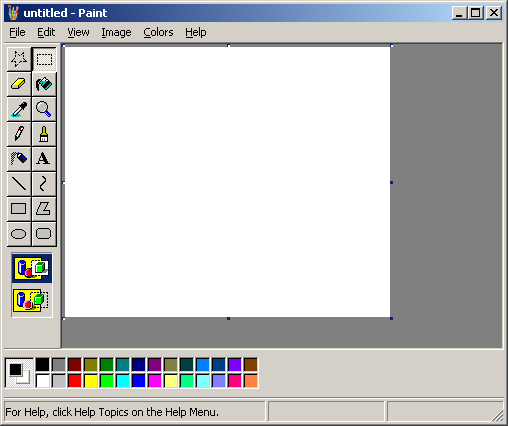
One of the utilities, called Tweak UI, gives you greater control over deleting specific icons. Microsoft offers a set of utilities called Power Tools at windows/software.htm. If this broad-brush approach isn't what you want, you can use another method.
Paintbrush windows 3.1 windows#
Choose file, exit and then restart Windows 95.

Paintbrush windows 3.1 plus#
Click on the plus sign under "shell," then click the plus sign next to the word restrictions. So, fire up the System Policy Editor and go to local user. It will hide the network neighborhood icon or all the other icons. You are now all set, with the System Policy Editor located under start/programs/accessories/system tools.īefore we proceed, there is a major warning here: The System Policy Editor doesn't give you much flexibility.
Paintbrush windows 3.1 install#
Click the OK button in the "install from" file dialog box, then click on the install button. Click the "have disk" button and select \Admin\Apptools\poledit on the CD ROM. Double click on the Add/Remove icon in the Control Panel. But first you have to install the editor from your Windows 95 CD. The official rule books say you need to use something called the System Policy Editor. Getting rid of these takes some real effort. The question refers to the icons that appear there automatically when you install Windows 95, the Network Neighborhood icon and the Microsoft Network icon, for instance. Q: Can you help with removing unwanted Windows 95 icons?Ī: This person is not talking about shortcut icons that you may put on your Windows 95 desktop - those you can get rid of by right-clicking on your mouse. You may get the impression that you will never run out of system resources in Windows 95, but that is not the case. Although it retains the GDI and User information layout so that it can run older applications, it has much more room to store systems data. Windows 95 attempts to remedy this problem. Under Windows 3.1, your system can lock up if you have more than four or five windows open at any one time - you are running out of system resources. The more you have going on at one time, the more of the GDI and User heaps are being used.
/s.glbimg.com/po/tt2/f/original/2017/02/20/paint_no_windows_vista.png)
Every time you open up a window, you take up space from these heaps. These help control the actual windows on your screen. The other three heaps are together called the User Interface Module, or User heap. It works with graphic objects - like the Paintbrush program - and also helps with some printer functions. One heap is called the Graphic Device Interface (GDI) heap. Under Windows 3.1, there are four 64K chunks of memory, called "heaps," dedicated to managing these activities. The operating system is rushing around behind the scenes to manage graphic objects, like Paintbrush itself, and the window in which it's displayed. When you are sitting in front of your computer playing around with, say, the Paintbrush program, a lot of things are going on that you don't realize.

A: They are behind-the-scenes modules that help your computer's operating system juggle all the various activities it handles.


 0 kommentar(er)
0 kommentar(er)
